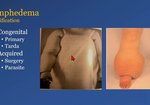Video Player is loading.
Current Time 0:00
/
Duration 0:00
Loaded: 0%
Stream Type LIVE
Remaining Time -0:00
1x
- 0.5x
- 0.75x
- 1x, selected
- 1.25x
- 1.5x
- 1.75x
- 2x
- Chapters
- descriptions off, selected
- captions settings, opens captions settings dialog
- captions off, selected
This is a modal window.
Beginning of dialog window. Escape will cancel and close the window.
End of dialog window.
10 seconds
Playback speed
This is a modal window. This modal can be closed by pressing the Escape key or activating the close button.
Axillary, Subclavian, and Internal Jugular Venous Valves: A Common Obstacle in PICC and CVC Placement
By
AVA 2022 Annual Scientific Meeting
FEATURING
Wayne Teipen
By
AVA 2022 Annual Scientific Meeting
FEATURING
Wayne Teipen
37 views
May 19, 2023
Presentation content includes a brief overview of the history of the discovery of the venous ...
read more ↘ valve, relevant studies supporting the presence, prevalence, and morphology of the typical axillary, subclavian, and internal jugular valves, and discussion of how the presence of these valves are the most common and likely cause of inability to advance PICC's and CVC's more common than the typically attributed reasons of tortuous anatomy and stenosis based on the most current research findings available. Illustrations and ultrasound images will be used as appropriate. The presentation would include discussion and description of how catheters and guidewires interact with the venous valves as well as current strategies we employ to advance catheters past these valves and why those strategies may or may not work. The goal of the presentation is to encourage a more purposeful use of techniques to advance catheters, a call to action for more research and study into the venous valves and effect they have on central line vascular access, as well as inspire and encourage potential innovations in catheter and navigation technology to assist insertions and improve patient outcomes.
↖ read less
read more ↘ valve, relevant studies supporting the presence, prevalence, and morphology of the typical axillary, subclavian, and internal jugular valves, and discussion of how the presence of these valves are the most common and likely cause of inability to advance PICC's and CVC's more common than the typically attributed reasons of tortuous anatomy and stenosis based on the most current research findings available. Illustrations and ultrasound images will be used as appropriate. The presentation would include discussion and description of how catheters and guidewires interact with the venous valves as well as current strategies we employ to advance catheters past these valves and why those strategies may or may not work. The goal of the presentation is to encourage a more purposeful use of techniques to advance catheters, a call to action for more research and study into the venous valves and effect they have on central line vascular access, as well as inspire and encourage potential innovations in catheter and navigation technology to assist insertions and improve patient outcomes.
↖ read less
Comments 0
Login to view comments.
Click here to Login





















